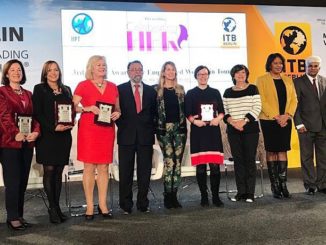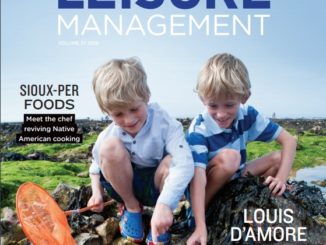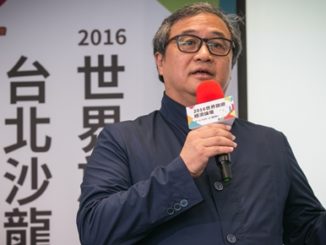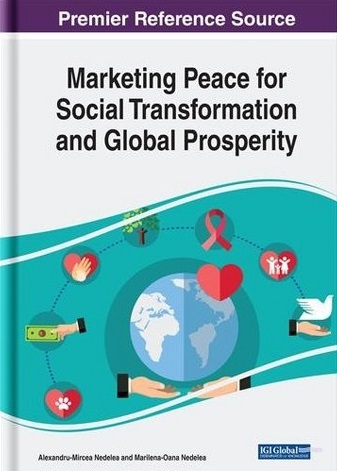
Initial Seeding
The original seeding of ‘Peace through Tourism’ occurred in the mid-1970’s when the firm of L.J. D’Amore and Associates was commissioned by the Government of Canada to conduct the world’s first comprehensive study on the future of tourism. The study was conducted through a “North American lens” with findings justifiably bullish on the future of tourism with higher levels of income and education, increased leisure time, more persons retiring with pensions, smaller families, and a general trend towards a propensity to travel for life enriching experiences. Social and environmental dimensions of tourism were also introduced for the first time – both positive and negative. (1)
The study was updated two years later in 1978 and subsequently an on-going futures research program was launched called “TOURSCAN” which produced 6 to 8 reports a year on societal trends and their implications for tourism; trends within the travel and tourism industry; and an annual forecast of tourism projections for the following year.
By the early 1980’s, “TOURSCAN” research began to be conducted through a “global lens” which in turn introduced a totally different view of the future – a future that included environmental deterioration; a growing gap between have and have not regions of the world; increasing “Cold War tensions”; a beginning increase in international terrorism; and early signs of global warming. With a realization that by the Year 2000, travel and tourism would be one of the world’s largest and fastest growing industries, consideration within L. J. D’Amore and Associates was being given to how travel and tourism could be a positive force for a better world.
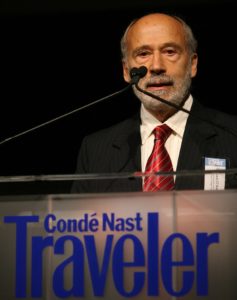
With travel and tourism taking on increasing importance in Canada, the First Canadian Travel Outlook Forum was organized and held in Toronto, October 1982 with the aim of identifying projections of the various industry sectors for the following year. As the “Futurist” for the Canadian travel and tourism industry, Louis D’Amore was asked to give the keynote address to provide a broader and longer term perspective. He titled his talk “The Two Faces of Tourism” – highlighting the potential future impacts of tourism both positive and negative with an emphasis on creating national strategies for positive outcomes.
Coincidentally, Canada’s Prime Minister, Pierre Elliot Trudeau, had recently mounted a ‘Peace Initiative’ conducting a series of meetings with global leaders with the aim of defusing the sharply rising East-West tensions of the Cold War. D’Amore linked his concluding remarks with Prime Minister Trudeau’s Peace Initiative suggesting that Canada’s travel and tourism industry take measures to support the Prime Minister by organizing an international conference on Tourism and Peace. The response was “we should keep our focus on things we have some control over.”:
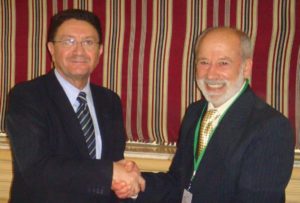
In the years following the ‘Travel Outlook Forum,” D’Amore continued lobbying leaders of the industry to gain support for an international conference on Tourism and Peace. Responses were:
“What’s tourism got to do with Peace” or “Peace – that’s government’s job.”
He persevered and continued authoring thought provoking articles and new ways of thinking about the global tourism industry including another Business Quarterly Article: “A Third Generation of Tourism Thinking: Towards a Creative Thinking.” The 1985 article concluded:
“The three most serious threats facing are the continued build-up of military and nuclear arms and on-going warfare in various parts of the world; the growing disparities between the poorest nations of the world and the world’s affluent nations;
and the continued desecration of our environment.”
A Table at the end of the article set out three generations of tourism, the first being 1945 -1973 when tourism had growing but limited economic significance, was fragmented; had limited political profile, etc; a second generation from 1960 to 1990 that saw the industry achieving major economic significance; a higher political profile; large scale operations; growth of industry associations and the phenomenon of ‘mass tourism. Elements of a ‘Third Generation of Tourism starting in 1985 (when the article was written) included:
- Public – Private sector collaboration. Linked objectives (e.g. environment, culture, urban and regional planning)
- Links to related industries, partnering
- Transportation – communication – information interface
- Learning/experiential oriented, global village context
- Holistic perspectives
- Networking in relation to broader societal objectives
- Integrated research and planning, Linked objectives
- Broader economic significance. Also social, cultural, educational and environmental significance
- New ‘statesmanship’ of industry leaders. Synergy with other industries. Contribution
to local, national goals and global goals – a “Global Village” perspective. * (2)
By 1985 – 86, international terrorism had peaked with much of it aimed at the travel and tourism industry: airplane hijackings; bombing of hotels, airline offices, airports and iconic tourism destinations such as the Champs Elysees. Canada’s travel and tourism industry leaders began to realize the connection between ‘Peace and Tourism’ – at least the downside of the connection -“Without peace there is no tourism.”
(Foot note)
- In the author’s view, this statesmanship came to be realized with the leadership of a team referred to as the ‘Three Musketeers” – Dr. Taleb Rifai, Secretary General, UN World Tourism Organization (UNWTO); David Scowsill, CEO, World Travel and Tourism Council (WTTC); and Dr. Mario Hardy, CEO, Pacific Asia Travel Association (PATA);
International terrorism was one of the trends being monitored by the TOURSCAN research program and by mid-1986, the world’s most in-depth report on the ‘Impacts of Terrorism on Tourism” was prepared for TOURSCAN clients including the Canadian Government, each of the Provinces of Canada, and major private sector companies such as Air Canada. A summary of the report was published in the ‘Business Quarterly,’ Canada’s most prestigious business journal with the title: International Terrorism: Implications and Challenge for Global Tourism – and a copy sent by the editor to Canada’s top 100 travel and tourism industry executives.
The article concluded on a positive note referring to the powerful and symbolic photographs first taken of the earth from space and the words of U.S. Astronaut Edgar Mitchel describing what he saw as “a beautiful, harmonious, peaceful looking planet, blue with white clouds, and one that gave you a deep sense …… of home, of being, of identity.”
The article continued:
“The tourism industry is well positioned to play a central role in achieving the global harmony we all seek. There is no better way to promote understanding and trust among people than through the direct contact offered by tourism.
Tourism is a vehicle for the exchange of ideas; the learning and appreciation of different cultures. It is a means for promoting a moral and intellectual base for international understanding, respect and confidence; a base for shared goals and aspirations. Tourism is also a means of achieving the social and economic development of Third World nations in a manner which is sensitive to a country’s social and cultural context.
Tourism, which is now the world’s largest industry, has the promise of becoming the world’s first peace industry; an industry which recognizes, promotes and supports the belief that every traveler is potentially an ‘Ambassador for Peace’.” (2)
The TOURSCAN report on terrorism mentioned above resulted in Canada’s travel and tourism industry – both public and private sectors, agreeing to support an international conference on Peace and Tourism, and with this, the International Institute for Peace through Tourism (IIPT) was born.
Birth of the International Institute for Peace through Tourism (IIPT)
IIPT was born in 1986, the UN International Year of Peace, with a vision of travel and tourism becoming the world’s first global peace industry and the belief that every traveler is potentially an Ambassador for Peace.
IIPT’s concept of “Peace” from the start has been a positive concept that goes beyond the notion of simply the absence of war. It embraces six dimensions:
– Peace and tranquility within ourselves;
– Peace with others, from our neighbors next door to our neighbors in the global village;
– Collaboration among nations
– Peace with nature and our common home – planet earth;
– Peace with past generations – by which we honor our respective cultures, heritage and
achievements of past generations;
– Peace with future generations – through sustainable lifestyles and practices; and
– Peace with our Creator – by practicing the universal principle of all faiths and
humanists: do unto others as we would have them do unto ourselves;
Bringing us full circle to ‘peace and tranquility within ourselves’
The organization, planning and marketing of the First Global Conference: Tourism – A Vital Force for Peace in , 1988 had begun.
Marketing of the First Global Conference: Tourism – A Vital Force for Peace
For persons younger than 35 or 40 it is probably difficult to imagine a world without the internet and without email. Yet, this was the world of 1986, indeed fax machines were just being introduced. Marketing of the First Global Conference for a start-up NGO, with no membership, networks or mailing lists was therefore a major marketing challenge.
Fortunately, having been the Futurist to the Canadian travel and tourism industry for more than 20 years; one of the world’s first professional futurists; and active in various tourism industry associations for 25 years, D’Amore and the newly formed IIPT had many friends both in Canada and internationally.
- The Fontayne Group, a prominent public relations firm specializing in tourism, provided public relations pro bono from the start, including the hosting of a reception in New York with prominent journalists.
- Canada’s Ministry of Foreign Affairs agreed to promote the Vancouver Conference through their embassies and consulates throughout the world;
- the Tourism Industry Association of Canada (TIAC) promoted the conference to their members;
- International mailing lists were assembled from various colleagues and organizations totaling about 15,000 names and addresses. Three waves of promotional brochures were mailed with the last mailing being the tentative Conference Program.
- IIPT’s Founder was invited to give talks at various conferences and seminars;
- Major sponsors of the conference including the Governments of Canada; Provinces of Alberta and British Colombia; City of Vancouver; Via Rail, and Title Sponsor – Air Canada, all assisted in promoting the Conference.
- Approximately 50 international organizations agreed to be “Supporters’ of the Conference (organizations who supported the aims and objectives of the Vancouver Conference) and therefore agreed to promote the conference to their respective members.
- The Business Quarterly article on International Terrorism was followed with another Business Quarterly article: “Tourism – the World’s Peace Industry” with as complete a rationale that D’Amore could provide for tourism being a ‘Vital Force for Peace.’
- Newspapers in other countries began to write articles on the role of tourism in contributing to peace and the upcoming Conference in Vancouver.
- Announcements of the Conference appeared in Tourism journals and publications.
- Time Magazine provided a full page ad in its Quebec, Canada edition
- IATA provided a full back cover, colored ad in its monthly news magazine.
- Title Sponsor, Air Canada had an excellent relationship with the Financial Post, Canada’s one national newspaper at the time. The Financial Post agreed to provide IIPT two full facing pages in four different issues during the months leading up to the Conference. This prime space was used to invite Canadian and International leaders to prepare a written statement of approximately 250-300 words regarding their thoughts related to “Tourism as a Vital Force for Peace.”
In 1988, none of them had in fact given thought to the relationship of Tourism and Peace. prior to being invited to submit a brief essay. This therefore also served to have leaders give some thought to the role of “Tourism as a Vital Force for Peace.” Their essays together with their photos, graced the two facing pages of four editions of the Finacial Post – 10 per edition. Contributors included: Brian Mulroney, Prime Minister of Canada; Joe Clark, Minister of Foreign Affairs, Canada; Dr. Willibald Pahr, Secretary General, World Tourism Organization; J. W. Marriott, Chairman, Marriott, Jr., Chairman, Marriott Corporation; Maurice Strong, Chairman, World Federation of United Nations Associations; Claude Taylor, Chairman, Air Canada: Donna Tuttle, Head of the U.S. Travel and Tourism Administration and others.
- Via Rail provided a “Peace Train” that began in Montreal, traveling across Canada to Vancouver, picking up students from both Canada and the U.S. in Montreal, Toronto, Winnipeg and Calgary. Two professors of Tourism and Hospitality conducted seminars and workshops as they traveled across the country.
The net result of the above efforts was the participation of 800 delegates from 68 countries with feedback that it was “the best conference they had ever attended.”
Outcomes of the 1988 Vancouver Conference: Tourism – A Vital Force for Peace
IIPT was blessed to have six internationally prominent leaders as policy advisors including
Maurice Strong, Chairman, World Federation of United Nations Associations; Claude Taylor, Chairman, Air Canada; Dott. Vittorio Vaccari, Vice Chairman, Alitalia; Patrick Reid, Commissioner, EXPO ’86; Frank King, Chairman, XV Winter Olympics; and Sonja Bata, Director, Bata Ltd.; a Management Committee with leaders of the Canadian travel and tourism industry; and an outstanding Program Committee led by four internationally prominent educators: Dr. Donald Hawkins, George Washington University; Dr. Jafar Jafari, University of Wisconsin and Editor, Annals of Tourism Research; Dr. John Hunt, University of Massachusetts; and Dr. Elwood Shafer, Pennsylvania State University. Dr. Larry Neal coordinated the International Student Forum.
The 1988 Vancouver Conference was a transforming event for the tourism industry. Honorary Chair of the Conference was H.E. Vigdis Finnbogadottir, President of Iceland, the world’s first elected woman Head of State. The Conference opened with inspiring video taped messages from Pope John Paul II and then U.S. President, Ronald Reagan. Featured keynote speakers included Stephen Lewis, Canada’s Ambassador to the United Nations and best orator at the time; J. Willard Marriott, Chairman and President, Marriott Corporation; Dr. Willibald Pahr, Secretary General World Tourism Organization; Dr. Inamullah Kahn, Executive Chairman, World ConferencDe on Religion and Peace; Ervin Laszlow, Founder and President, General Evolution Research Group; Dr. Fouad Sultan, Minister of Tourism and Aviation, Egypt – and other dignitaries.
The Conference first introduced the concept of Sustainable Tourism, four years prior to the United Nations Conference on Environment and Development (UNCED), popularly known as the 1992 Rio Earth Summit. The Rio Summit formulated the foundations for Sustainable Development and an Action Plan known as Agenda 21.
The First Global Conference; Tourism – A Vital Force for Peace also is credited with the
‘launch of the Peace through Tourism Movement” motivating many of the 800 participants from 68 countries and their various organizations to create and implement actions and projects contributing to a peaceful and sustainable tourism.
As one example, the World Wildlife Fund (WWF) in the U.S. had just hired someone to look at the new phenomenon of .Ecotourism and to recommend whether WWF should be supporting or opposing Ecotourism. The person hired, Elizabeth Boo, a recent graduate of Notre Dame, returned to WWF from the Vancouver Conference recommending they support Ecotourism and WWF conducted the first major study of Ecotourism – several case studies in Central America – demonstrating the benefits of Ecotourism – and peace with nature.
Ambassador Arthur Campeau, Canada’s first Ambassador for the Environment who played a key role in formulating the UN Convention on Biodiversity at the Rio Summit, believed that
Ecotourism was the main hope we had for preserving the earth’s biodiversity.
At a time when most tourism was ‘mass tourism’ the Vancouver Conference introduced a
new paradigm for a “Higher Purpose of Tourism” – a paradigm that includes the key role of tourism in:
- Promoting international understanding
- Collaboration among nations
- Protecting the environment and preserving biodiversity
- Enhancing cultures and valuing heritage
- Sustainable development
- Poverty Reduction, and
- Healing Wounds of Conflict.
This ‘higher purpose’ of tourism – with its capacity to generate social, cultural, economic, environmental, and political benefits has now been recognized and gained acceptance at the highest levels of both governments and industry together with the immense potential of travel and tourism, as the world’s largest industry, in contributing to a “Culture of Peace.”
Other significant outcomes included the ‘Columbia Charter’ which set out principles of socially and environmentally responsible tourism; sustainable tourism; and tourism that promoted international understanding and peace.
Marketing Peace through Tourism since the Vancouver Conference
IIPT has since organized seventeen international conferences and summits as well as seminars and workshops in regions throughout the world bringing together both public and private sector leaders of the industry, educators, students, practitioners, and non-governmental organizations as well as leaders from related sectors including economic development, environment, culture and sport.
More than 6,000 persons from some 140 countries have come together over the past 30 years to share their experience, ideas, insights, wisdom and commitment in “Building a Culture of Peace through Tourism.” More than 1,200 case studies of “Success Stories” and models of “Best Practice” have been presented demonstrating the various dimensions of a “Higher Purpose” of Tourism and the social, economic, cultural, environmental, and political benefits of tourism.
Persons associated with IIPT Conferences and Summits have included Pope John Paul II and Heads of State: U.S. President, Ronald Reagan; HE Vigdis Finnbogadottir, President of Iceland; Nelson Mandela, President of South Africa; Dr. Kenneth Kaunda, first President of Zambia; HE Olusegun Obasanjo, President, Federal Republic of Nigeria, and President, African Union; HE Levy Patrick Mwnawasa, President, Republic of Zambia; HE Yoweri Kaguta Museveni, President, Uganda; and Hon. Dr. Ewart F. Brown, Premier of Bermuda.
Kings, Queens and Princes associated with IIPT Conferences and Summits have included:
HM King Abdullah II; HM Queen Noor, and HM Queen Rania, all of Jordan; and HSH Prince Albert, Monaco.
Heads of UN Agencies include: UN Secretary General Kofi Annan; Mary Robinson, UN High Commissioner for Human Rights; Dr. Willibald Pahr, Francesco Frangialli and Dr. Taleb Rifai, UN World Tourism Organization.
Nobel Laurieates have included: Shimon Peres; Arch Bishop Desmond Tutu; Wangari Maathai; and David Trimble; and travel travel industry leaders: J.W. Marriott, Jr, Chairman and CEO, Marriott International; Harvey Golub, Chairman, American Express and Chairman, World Travel and Tourism Council;. Claude Taylor, Chairman, Air Canada; Geoffrey Lipman and Jean-Claude Baumgarten, Presidents of World Travel and Tourism Council; more than 40 other CEO’s of major travel and tourism industry corporations; and more than 60 Ministers of Tourism.
World Travel Market and ITB Berlin
IIPT has also marketed ‘Peace through Tourism’ by organizing featured events at World Travel Market, the world’s premier travel trade show, each year since 1999. Following 9/11 in 2001, theme of the Opening Ceremony was changed to ‘Peace through Tourism’ and paying tribute to IIPT. More recently, featured events have been held each year at ITB as well, organized by IIPT India in partnership with ITB. The annual event is an Awards Ceremony, “Honoring Her” that provides awards to outstanding women in tourism, leading by example and empowering other women in the industry. ,
Celebrating ‘Diplomats for Peace’
IIPT India has also innovated by launching an inaugural ‘Diplomats for Peace’ event this past year, recognizing and celebrating the critical role of Diplomats in nurturing peace and harmony throughout the world. Participating with IIPT India was the UN World Tourism Organization (UNWTO). The first-ever event was presented by VFS Global, the world’s leading visa facilitation agency and TravelBiz Monitor, India’s premier Travel and Tourism industry publication. The first ever event brought together more than 40 Ambassadors and diplomatic personnel representing 95 nations.
Legacies of Peace through Tourism
Beginning with its First Global Conference in Vancouver 1988, IIPT has strived to further market the concept of ‘Peace through Tourism’ by leaving a lasting legacy with each conference and summit. Table A is a listing of significant Conference outcomes.
Table A
Marketing Peace through Tourism with Lasting Legacies
Conference Declarations:
- Columbia Charter – Vancouver 1988
- Amman Declaration – Amman 2000 (an official U.N. Document)
- Thessaloniki Declaration – 2001
- 21st Century African Agenda for Peace and Poverty Reduction through Tourism – Nelspruit, Mpumalanga Province, South Africa 2002
- Tanzania Action Plan – Dar es Salaam, Tanzania 2003
- Lusaka Declaration on Climate Change – Lusaka, Zambia 2011
Other Conference Legacies:
- Broad international awareness to the potential of travel and tourism to contribute to broader societal and global objectives and the realization of a peaceful, just, and sustainable world.
- IIPT Credo of the Peaceful Traveler distributed throughout the world.
- World leaders King Hussein of Jordan, UN Secretary General Dag Hammarskjold; Nelson Mandela; Mahatma Gandhi and Martin Luther King, Jr. acknowledged as “Men of Peace.”
- Awards to individuals and organizations in recognition of outstanding achievements that contribute to international understanding, cooperation, sustainable development and peace
- Concept of Sustainable Tourism Development first introduced at First Global Conference Vancouver, 1988 – four years prior to the Rio Summit 1992.
- Second Global Conference, Montreal 1994: “Building a Sustainable World through Tourism” – first showcased case studies of “Success Stories” and “Models of Best Practice” of Sustainable Tourism.”
- Uganda first nation in the world to introduce Tourism Legislation in support of the U.N. Millennium Development Goals.
- Africa Diaspora Heritage Trail (ADHT) conceived by Bermuda Minister David H. Allen at the First Global Summit, Amman.
- Launch of Uganda Martyr’s Trail
- Proclamation of “National Peace through Tourism Week” for three of IIPT’s African Conferences.
- Pattaya, Thailand declared a “City of Peace” as legacy of IIPT 3rd Global Summit.
- Facilitated MOU between Pacific Asia Travel Association (PATA) and Africa Travel Association (ATA) with the aim of nurturing an “Asia – Africa Bridge of Tourism, Friendship and Collaboration.”
- International Youth Hostel flagship program “Hosteling for Peace and International Understanding” in partnership with IIPT.
- Educator Forums and Student/Youth Leadership Forums at each IIPT Conference and Summit.
- “Peace through Tourism” incorporated in educational programs of colleges and universities and increasingly a topic of scholarly research by professors and students.
- Scholarships awarded students in each region of the world related to the theme of each Conference and Summit.
—————————————————————————————————————————-
Additional Legacies
Codes of Ethics and Guidelines for Sustainable Tourism
Following the 1992 United Nations Earth Summit in Rio in 1992, IIPT developed the world’s first Code of Ethics and Guidelines for Sustainable Tourism with a mandate from the Canadian travel and tourism industry. These also served as an early model for other nations. As well, IIPT developed guidelines for the Pacific Asia Travel Association (PATA) GreenLeaf Program.
First International Study of Tourism and Sustainable Development
In 1993, IIPT was commissioned by the United Nations Environment Program (UNEP) to conduct the first international study of best practice regarding Tourism, Environment and Sustainable Development.
Peace Parks across Canada
The IIPT Peace Parks across Canada program commemorated Canada’s 125th Birthday as a nation in 1992. Three hundred and fifty cities and towns from St. John’s, Newfoundland on the shores of the Atlantic – across five time zones to Victoria, British Columbia on the shores of the Pacific dedicated a park to peace. The Peace Parks were dedicated at noon local time, October 8th, as a National Peacekeeping Monument was being unveiled in Ottawa with 5,000 UN Peace Keepers passing in review. Each of the Peace Parks incorporated a ‘Bosco Sacro’ (Peace Grove) of 12 trees symbolic of Canada’s 10 Provinces and 2 Territories; as a symbolic link with one another, and with nature; and as a symbol of hope for the future. Of the more than 25,000 projects commemorating Canada’s 25th anniversary, Peace Parks Across Canada was said to be the most significant.
International Peace Parks as Legacies of International Conferences and Global Summits
“Peace Parks Across Canada” has served as the foundation for dedicating IIPT International Peace Parks as legacies of international conferences and global Summits. A notable early dedication was the IIPT Peace Park dedicated on the 11th hour, of the 11th day, of the 11th month, 2000 – first year of the new Millennium at Bethany Beyond the Jordan, site of Christ’s baptism, as a legacy of the IIPT First Global Summit, Amman, Jordan.
Another notable dedication was the IIPT International Peace at Victoria Falls as a legacy of IIPT’s Fifth African Conference, Lusaka, Zambia, 2011. The IIPT Victoria Falls Peace Park was then re-dedicated September 24, 2013 as the featured event, Opening Day of the UNWTO 20th General Assembly co-hosted by Zambia and Zimbabwe. Participants in the ceremony included UNWTO Secretary General Dr. Taleb Rifai; Zambia’s first President Dr. Kenneth Kaunda; King Makuni of the Leya people on whose land Victoria Falls is located; Zambia Minister of Tourism and Arts, Sylvia Masebo; Dr. Patrick Kalifungwa, former Minister of Tourism, Environment and Natural Resources, Zambia and Vice Chancellor, Livingstone International University of Tourism Excellence and Business Management (LIUTEBM); and H.E. Akel Biltaji, representing HM King Abdullah of Jordan who brought six olive trees from Bethany Beyond the Jordan, site of Christ’s baptism, to be planted during the ceremony. Like Victoria Falls, Bethany Beyond the Jordan is also a World Heritage Site.
Marketing Peace through Tourism Moving Forward
IIPT 30th Anniversary Global Summit
Plans have just begun for the organization of an IIPT 30th Anniversary Global Summit with key international partners of the travel and tourism industry to be held in 2019.
IIPT International Year of Community Tourism
In recognition of IIPT Caribbean President, Diana McIntyre Pike pioneering Community Tourism 40 years ago – and continuing to this day; first in Jamaica, then the Caribbean, followed by Africa and other regions of the world; 2018 has been declared the IIPT International Year of Community Tourism and will culminate with an International Community Tourism Conference to be held late November 2018 in Jamaica.
Introduction of IIPT Awards
IIPT launched the International Peace through Tourism Awards at the Resilience through Tourism Summit (RTTS) held in Amman, Jordan in June 2018. The awards highlight global tourism’s contribution to peace and prosperity and act as a benchmark to celebrate how far organizations, communities and countries have come since the Vancouver Conference 1988 and the Amman Declaration on Peace Through Tourism, resulting from the IIPT Amman Global Summit 2000 and subsequently adopted as an official document of the United Nations.
With Jordan playing host to the RTTS Summit, the Middle East was given the unique first opportunity to showcase the considerable progress of peace through tourism in the region. A total of 28 nominations were received from local businesses, destinations and NGO’S with the following four winners, being announced in a special ceremony at the Summit:
Joint winners of the Peace Through Community Livelihood Enhancement Award were Petra National Trust and Jordan River Foundation; winner of the Peace Through Cultural Diversity Award was the Jordan Trail Association; and winner of the Peace Through Respect of Sustainable Development and Ecological Balance Award was Ecohotels (Feynan Ecolodge).
IIPT Global Peace Parks Project
The Global Peace Parks Project builds on the success of IIPT’s 1992 “Peace Parks across Canada” Project commemorating Canada’s 125th birthday as a nation (see above). The project is in support of the World War I Centenary and its theme “No More War.” Goal of the project is 2,000 IIPT Peace Parks (including those already in place), circling the earth by November 11, 2018. A special event will be planned for Bethany Beyond the Jordan, site of Christ’s baptism, where an IIPT Peace Park was dedicated precisely on the 11 th hour of the 11th day of the 11th month, first year of the new Millennium, as a legacy of the IIPT Amman Summit 2000.
Harrisburg, Pennsylvania, one of the first state capitals of the United States, is serving as a ‘Model Peace Park’s Project’ with the dedication of its 2 mile long Riverside Promenade/Park as an IIPT Peace Park – and with a special event each month over the past year – leading up to November 11, 2018. Also planned is the dedication of a new monument dedicated to the contribution of Harrisburg’s African Americans to American History.
Partnering with IIPT is United Cities and Local Governments (UCLG), the united voice and world advocate of democratic local self-government with a global network of cities, local and regional governments representing 70% of the world population. UCLG goals include contributing to the achievement of the SDG’s, Paris Agreement, Sendai Framework for Disaster Risk Reduction, and New Urban Agenda for Sustainable Urban Development.
IIPT Travel for Peace Campaign
A second flagship project of IIPT’s 30th Anniversary Year is the “IIPT Travel For Peace Campaign” that encourages every traveler to be an “Ambassador for Peace” by practicing the IIPT Credo of the Peaceful Traveler and the ethic inherent in the iconic Padre Johnson portrait of the Global Family reminding us that we are “One Earth One Family.” Travel agents, tour operators, hotels, airlines and other sectors of the travel and tourism industry are being invited to become charter members of the campaign and to encourage their clients to be “Ambassadors for Peace.”

Grateful for the opportunity to travel and experience the world and because peace begins with the individual, I affirm my personal responsibility and commitment to:
- Journey with an open mind and gentle heart
- Accept with grace and gratitude the diversity I encounter
- Revere and protect the natural environment which sustains all life
- Appreciate all cultures I discover
- Respect and thank my hosts for their welcome
- Offer my hand in friendship to everyone I meet
- Support travel services that share these views and act upon them and,
- By my spirit, words and actions, encourage others to travel the world in peace
International Institute for Peace Through Tourism

